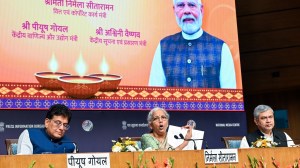Leh cloudburst due to global warming: IITM
Leh cloudburst was an impact of global warming,feel scientists at the Indian Institute of Tropical Meteorology,Pune.
Leh cloudburst was an impact of global warming,feel scientists at the Indian Institute of Tropical Meteorology (IITM),Pune. They said extreme events have been increasing in monsoon season due to warming.
The normal average temperature of the Northern Hemisphere is 15 degrees Celsius. However,it has been observed that it has gone up to 15.7 degrees Celsius. The low pressure areas shifted to North-West due to warming that helped the monsoon winds reach Leh area,which generally gets very low rainfall even compared to dry places in Rajasthan, said Nityanand Singh,a senior scientist at IITM.
He said the mixing of cool dry continental polar air from north and warm moist meritime tropical monsoon air from south resulted in the cloudburst. Such phenomenon were observed during Mahabharat era when the average temperature of the hemisphere had gone up to 16 degree Celsius, he said.
Singh said this year Pakistan,China,Tibet,Manchuria and most of the North-West countries have been experiencing such extreme phenomena. This is the impact of global warming on monsoon rainfall in South-East Asia, he said.
Another senior scientist at IITM,J R Kulkarni,also said it has been observed that extreme events have been increasing in monsoon season. We will study the Leh cloudburst at IITM as it was a rare phenomenon, he said.
Kulkarni said when the cloudburst occurred in Leh,easterly winds were blowing in the area. Convective system was formed over the region which started the rainfall. The clouds may have been 10 to 15 km in the depth that caused intense rains, said Kulkarni.
He said such phenomenon occurs in deserts too.
When it was raining heavily in old Leh city,the Leh air force station only a few km away received only 12 mm rainfall. The rain gauge at Leh air force station recorded only 12 mm rainfall. Since cloudburst is a localised event,it can happen. However,we do not have the exact figures of rainfall since there was no rain gauge in that area, said Kulkarni.
He said in mountain areas such as Leh installing network of automatic weather stations and radars is necessary. Radars can observe the development of clouds every six minutes and warn of any calamity at least three hours before it happens. It can minimise the losses, he said.







